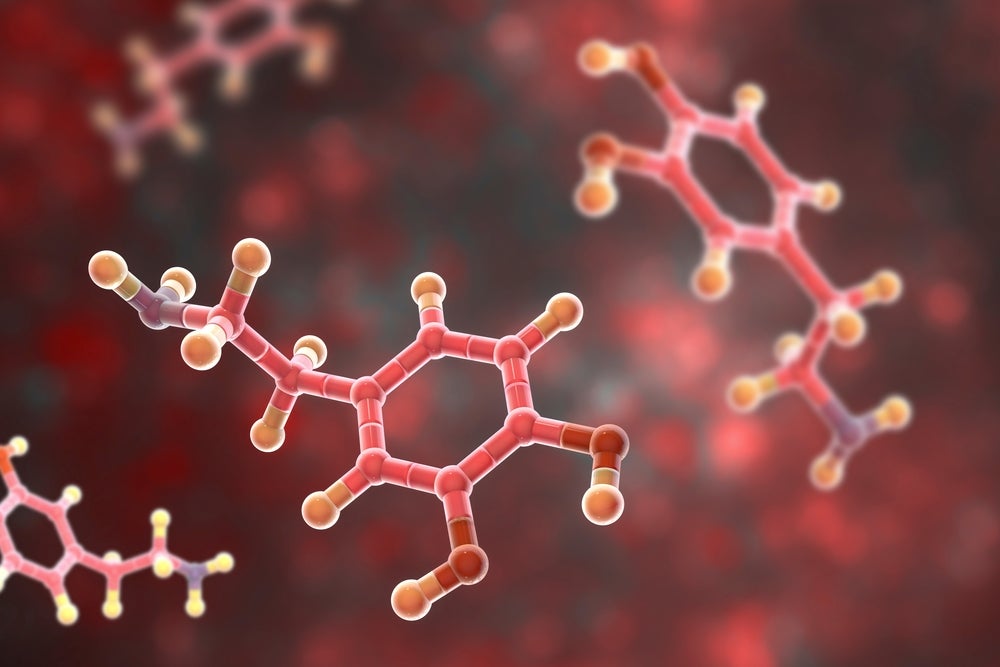High-Risk Patients in Post-Radiation Neck Surgery
In the evolving landscape of head and neck cancer treatment, the role of salvage neck dissection (ND) after (chemo)radiotherapy remains a pivotal but complex aspect of clinical management. Recent research published in BMC Cancer sheds new light on the postoperative complications related to salvage ND for patients with head and neck squamous cell carcinoma (HNSCC), […]


In the evolving landscape of head and neck cancer treatment, the role of salvage neck dissection (ND) after (chemo)radiotherapy remains a pivotal but complex aspect of clinical management. Recent research published in BMC Cancer sheds new light on the postoperative complications related to salvage ND for patients with head and neck squamous cell carcinoma (HNSCC), underscoring the necessity to identify patients at high risk for significant morbidity. This comprehensive study not only delineates the frequency and severity of complications but also reveals critical risk factors associated with these outcomes, promising to influence clinical decision-making and patient care protocols.
Salvage neck dissection is often reserved as a crucial intervention in cases where residual nodal disease persists following primary (chemo)radiotherapy. Although it is generally perceived as a safe surgical remedy, the procedure carries an inherent risk of postoperative complications, which can exacerbate patient morbidity and negatively impact quality of life. The study in question reflects a pressing need to balance the potential therapeutic benefits of salvage ND against these risks, emphasizing the avoidance of unnecessary surgical interventions.
By analyzing a cohort of 908 patients treated for node-positive HNSCC between 2008 and 2022, the researchers identified 130 individuals who underwent salvage ND, representing approximately 14% of the population studied. This substantial dataset allowed for a detailed examination of postoperative complications graded according to the Common Terminology Criteria for Adverse Events (CTCAE), version 5. The focus on grade 2 and grade 3 complications enabled a nuanced understanding of both moderate and severe postoperative adverse effects.
The findings revealed that 52% of patients experienced grade 2 or higher complications, a figure that starkly illustrates the significant morbidity associated with salvage ND. Of particular note, 18% of patients encountered grade 3 complications, which are categorized as severe and typically require medical intervention. The most common grade 3 issues included wound infections and dehiscence, fistula formation, bleeding, and the need for tracheotomy. Less frequent but serious complications like dysphagia, severe pneumonia, septicemia, and frozen shoulder were also documented, sometimes occurring concurrently in the same patients.
Crucially, the study’s logistic regression analyses pinpointed three independent predictors of grade ≥2 postoperative complications: the extent of the salvage neck dissection performed, the size of the largest lymph node involved, and HPV-negative disease status. Patients who required more extensive surgical procedures, those harboring lymph nodes larger than 3 cm, and individuals with HPV-negative tumors demonstrated a markedly increased risk of significant postoperative morbidity. These insights highlight the heterogeneity within the salvage ND patient population and stress the importance of tailored risk assessment.
Interestingly, despite the high rate of complications, the occurrence of grade ≥2 complications did not correlate with worse overall survival. This decoupling suggests that while salvage ND may elevate morbidity, it does not necessarily compromise the long-term oncologic outlook for these patients. Conversely, patients presenting with HPV-negative tumors and those with advanced nodal stage (N3) were found to have independently worse survival outcomes, reaffirming the prognostic relevance of tumor biology and disease burden.
The study’s implications extend beyond clinical prognosis and into the realm of surgical decision-making. With 41% of patients having residual viable tumor cells in the neck dissection specimen, the data underline the challenge of accurately detecting residual disease to prioritize candidates truly benefiting from salvage ND. This precision in patient selection could concurrently minimize unnecessary surgeries and their attendant complications, representing a significant advance in personalized oncology.
Technical evaluation of the salvage ND procedures illuminated the impact of surgical extent on complication risk. Modified radical neck dissections, which involve comprehensive removal of lymphatic tissue alongside preservation of critical structures, were associated with a greater likelihood of higher-grade complications compared to more limited dissections. The study thus prompts a re-examination of surgical strategies to optimize outcomes and reduce postoperative morbidity.
An essential facet of this inquiry involves the role of HPV status, a biomarker increasingly recognized for its prognostic significance in HNSCC. The finding that HPV-negative patients experienced higher complication rates invites further exploration into the tumor’s biological behavior and its interaction with host tissue healing mechanisms, potentially guiding both therapeutic choices and postoperative care protocols.
The investigative framework employed—retrospective review of a large patient database spanning over a decade—afforded robust statistical power and comprehensive clinical correlations. This methodological rigor strengthens the reliability of the conclusions drawn and supports their application in clinical settings. Moreover, the utilization of standardized complication grading ensures comparability with other studies and facilitates the incorporation of findings into broader oncologic practice.
Despite the advances illuminated by this work, the authors acknowledge several challenges that remain. The complexity of post-(chemo)radiotherapy tissue changes, coupled with limitations in imaging sensitivity, complicates the identification of residual disease, often leading to cautious but potentially overtreatment. Innovations in diagnostic modalities and molecular imaging may thus serve as crucial adjuncts in refining patient selection.
From a patient-centered perspective, the high incidence of complications, particularly those affecting wound healing and respiratory function, signals the need for enhanced perioperative support. Multidisciplinary approaches involving surgeons, oncologists, rehabilitation specialists, and nursing teams are paramount to mitigate postoperative risks and facilitate recovery, ultimately preserving patient quality of life.
Furthermore, this research underscores the ongoing necessity to tailor cancer treatments not only to maximize oncologic control but also to minimize adverse effects that impair function and well-being. As salvage ND remains a cornerstone in salvage therapy, continuous evaluation of its risk-benefit balance will inform best practices and policy guidelines.
In the broader context of head and neck oncology, this study contributes to a growing body of evidence advocating for precision medicine strategies. Through identifying specific patient characteristics that predict surgical risks, clinicians can refine treatment algorithms, prioritize minimally invasive options, and engage in informed shared decision-making with patients.
Future research directions may include prospective trials aimed at validating predictive models for complications, exploring novel biomarkers that indicate residual disease presence, and assessing the impact of surgical innovations on morbidity rates. Integrating genetic, immunologic, and radiologic data could yield a comprehensive risk stratification tool tailored to individual patients.
Ultimately, this study represents a significant step towards optimizing the care trajectory for patients with HNSCC facing salvage ND. By delineating key risk factors and quantifying postoperative morbidity, it equips clinicians with actionable knowledge to balance therapeutic efficacy with patient safety and quality of life considerations.
As the oncology community continues to grapple with the complexities of head and neck cancer management, research such as this highlights the critical importance of nuanced, evidence-based approaches. The ultimate goal remains clear: to deliver individualized, effective, and compassionate care that maximizes survival while minimizing harm.
Subject of Research: Postoperative complications and risk stratification following salvage neck dissection after (chemo)radiotherapy in head and neck squamous cell carcinoma patients.
Article Title: Postoperative complications following salvage neck dissection after (chemo)radiotherapy for head and neck squamous cell carcinoma: which patients are at high risk?
Article References:
Navran, A., Gouw, Z.A.R., Klop, W.M. et al. Postoperative complications following salvage neck dissection after (chemo)radiotherapy for head and neck squamous cell carcinoma: which patients are at high risk?. BMC Cancer 25, 823 (2025). https://doi.org/10.1186/s12885-025-14232-7
Image Credits: Scienmag.com
DOI: https://doi.org/10.1186/s12885-025-14232-7
Tags: (chemo)radiotherapy in cancer treatmentdecision-making in cancer careevaluating treatment outcomes in head and neck cancerhigh-risk patients in head and neck cancermanaging postoperative risks in surgerynode-positive head and neck squamous cell carcinomapatient care protocols in oncologypostoperative morbidity in HNSCCquality of life after neck surgeryrisk factors for surgical complicationssalvage neck dissection complicationssurgical interventions in cancer treatment
What's Your Reaction?


































